-
 Bitcoin
Bitcoin $115200
-2.68% -
 Ethereum
Ethereum $3601
-5.16% -
 XRP
XRP $3.035
-2.96% -
 Tether USDt
Tether USDt $0.9997
-0.04% -
 BNB
BNB $764.5
-5.43% -
 Solana
Solana $168.1
-5.92% -
 USDC
USDC $0.9998
-0.02% -
 Dogecoin
Dogecoin $0.2090
-4.80% -
 TRON
TRON $0.3272
-0.49% -
 Cardano
Cardano $0.7306
-5.00% -
 Hyperliquid
Hyperliquid $39.16
-12.22% -
 Stellar
Stellar $0.3967
-4.96% -
 Sui
Sui $3.566
-5.95% -
 Chainlink
Chainlink $16.55
-6.57% -
 Bitcoin Cash
Bitcoin Cash $552.3
-3.90% -
 Hedera
Hedera $0.2516
-4.69% -
 Avalanche
Avalanche $21.99
-5.75% -
 Toncoin
Toncoin $3.621
-0.28% -
 Ethena USDe
Ethena USDe $1.000
-0.03% -
 UNUS SED LEO
UNUS SED LEO $8.951
0.02% -
 Litecoin
Litecoin $105.9
-3.59% -
 Shiba Inu
Shiba Inu $0.00001232
-5.00% -
 Polkadot
Polkadot $3.640
-5.55% -
 Uniswap
Uniswap $9.048
-7.03% -
 Monero
Monero $301.8
-1.51% -
 Dai
Dai $0.9999
-0.01% -
 Bitget Token
Bitget Token $4.334
-3.66% -
 Pepe
Pepe $0.00001064
-6.17% -
 Cronos
Cronos $0.1367
-5.78% -
 Aave
Aave $259.2
-4.59%
Is blockchain a scam? Uncovering the pros and cons of blockchain technology
Blockchain's security and transparency are key advantages, but scalability and energy use remain significant challenges, often leading to misconceptions about its value.
May 29, 2025 at 04:15 pm
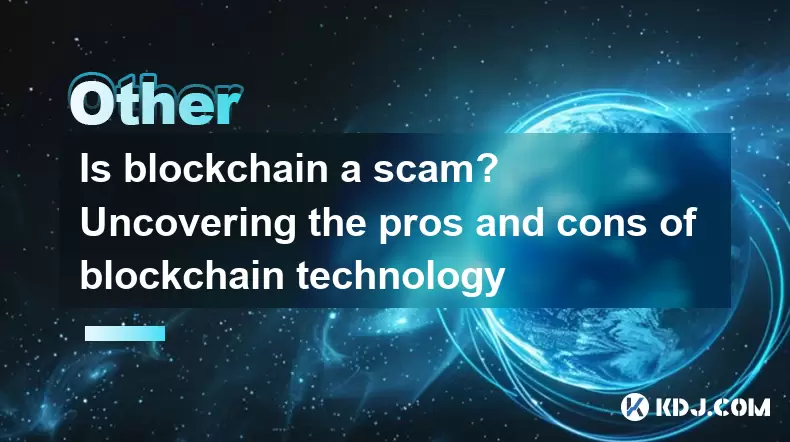
The question of whether blockchain is a scam often arises from misunderstandings or misinterpretations of the technology. To understand this, we must first delve into what blockchain technology is and how it functions. Blockchain is a decentralized and distributed digital ledger used to record transactions across numerous computers, ensuring that the records cannot be altered retroactively without the alteration of all subsequent blocks and the consensus of the network. This technology, first introduced with the cryptocurrency Bitcoin, has since found applications in various fields, ranging from finance to supply chain management.
The pros of blockchain technology are numerous and significant. One of the most touted advantages is security. Because blockchain is decentralized, there is no single point of failure. This means that to compromise the system, a hacker would need to simultaneously control a majority of the network's computing power, a feat that is extremely difficult and costly. Additionally, the transparency offered by blockchain is unparalleled. All participants have access to the same information, which is stored in an immutable ledger, reducing the chances of fraud and increasing trust among users.
Another significant advantage of blockchain is efficiency. Traditional systems often require intermediaries to process transactions, which can be time-consuming and costly. Blockchain, on the other hand, allows for peer-to-peer transactions without the need for intermediaries, speeding up the process and reducing costs. For instance, cross-border payments that might take days through traditional banking systems can be completed in minutes using blockchain.
Blockchain also promotes innovation. The technology has spurred the creation of numerous applications and platforms, such as smart contracts, decentralized finance (DeFi), and non-fungible tokens (NFTs). Smart contracts, for example, are self-executing contracts with the terms directly written into code. They automatically enforce and execute agreements, reducing the need for intermediaries and increasing the speed and efficiency of transactions.
Despite these advantages, the cons of blockchain technology are significant and should not be overlooked. One of the primary concerns is scalability. Current blockchain networks, particularly those like Bitcoin and Ethereum, struggle to handle a high volume of transactions efficiently. This can lead to slow transaction times and high fees, limiting the practical use of blockchain for everyday transactions.
Energy consumption is another major drawback. The process of mining, which is used to validate transactions and add them to the blockchain, requires significant computational power and, consequently, a large amount of electricity. For instance, the Bitcoin network's energy consumption has been compared to that of entire countries, raising concerns about its environmental impact.
Regulatory challenges also pose a significant hurdle for blockchain technology. The decentralized nature of blockchain makes it difficult for governments to regulate and monitor transactions, leading to concerns about its use in illegal activities such as money laundering and tax evasion. As a result, many countries have imposed strict regulations on cryptocurrencies and blockchain-based platforms, which can stifle innovation and limit the technology's adoption.
Moreover, the complexity of blockchain can be a barrier to its widespread adoption. For many people, understanding how blockchain works and how to use it can be daunting. This complexity can lead to confusion and skepticism, contributing to the perception that blockchain is a scam.
Understanding Common Misconceptions
One common misconception is that blockchain and Bitcoin are the same. While Bitcoin uses blockchain technology, blockchain itself is a broader concept that can be applied to various fields beyond cryptocurrencies. This misunderstanding often leads to the conflation of the two, with criticisms of Bitcoin's volatility and energy consumption being incorrectly applied to blockchain as a whole.
Another misconception is that blockchain is completely anonymous. While it is true that blockchain transactions do not require personal identification, the transactions themselves are recorded on a public ledger. This means that while the identities of the parties involved may be pseudonymous, the transaction data is transparent and traceable.
Real-World Applications of Blockchain
Blockchain technology has found numerous applications in the real world. In the financial sector, for example, blockchain is being used to facilitate faster and more secure cross-border payments. Companies like Ripple are leveraging blockchain to create efficient payment networks that can process transactions in seconds, rather than days.
In the supply chain industry, blockchain is being used to enhance transparency and traceability. Companies can use blockchain to track the journey of products from manufacturer to consumer, ensuring that all parties have access to the same information and reducing the risk of fraud.
Healthcare is another field where blockchain is making an impact. By storing patient data on a blockchain, healthcare providers can ensure that records are secure and easily accessible by authorized parties. This can improve the efficiency of healthcare delivery and enhance patient privacy.
Case Studies: Success and Failures
Several case studies highlight both the successes and failures of blockchain technology. One success story is that of Estonia's e-Residency program. Estonia uses blockchain to secure its digital services, allowing e-residents to start and manage businesses online securely. This has attracted thousands of entrepreneurs from around the world, boosting the country's economy.
On the other hand, the DAO (Decentralized Autonomous Organization) hack serves as a notable failure. In 2016, a vulnerability in the DAO's smart contract code was exploited, leading to the theft of approximately $50 million worth of Ether. This incident highlighted the risks associated with smart contracts and the importance of rigorous testing and security measures.
The Role of Education and Awareness
Education and awareness are crucial in dispelling the notion that blockchain is a scam. As more people understand the technology and its potential, the misconceptions and skepticism surrounding it are likely to diminish. Educational initiatives, such as workshops and online courses, can help demystify blockchain and showcase its practical applications.
Industry leaders and organizations also play a vital role in promoting blockchain technology. By sharing success stories and demonstrating the technology's benefits, they can help build trust and encourage adoption. For instance, IBM's Food Trust platform uses blockchain to improve food safety and traceability, providing a tangible example of how the technology can be applied in the real world.
Technical Challenges and Solutions
Addressing the technical challenges of blockchain is essential for its continued development. Scalability, for instance, is being tackled through various solutions such as sharding, which divides the blockchain into smaller pieces to process transactions more efficiently. Ethereum's transition to Ethereum 2.0, which will implement sharding, is a significant step in this direction.
Energy consumption is another area where solutions are being explored. Some cryptocurrencies, such as Cardano and Tezos, use more energy-efficient consensus mechanisms like Proof of Stake (PoS) instead of the energy-intensive Proof of Work (PoW) used by Bitcoin. These alternatives can significantly reduce the environmental impact of blockchain networks.
Frequently Asked Questions
Q: How does blockchain ensure security?
A: Blockchain ensures security through its decentralized nature, which eliminates single points of failure. Transactions are validated by multiple nodes on the network, and once added to the blockchain, they are immutable, making it extremely difficult for malicious actors to alter the data.
Q: Can blockchain be used for purposes other than cryptocurrency?
A: Yes, blockchain has numerous applications beyond cryptocurrency. It is used in supply chain management, healthcare, voting systems, and more, to enhance transparency, security, and efficiency.
Q: What are the main barriers to blockchain adoption?
A: The main barriers to blockchain adoption include scalability issues, high energy consumption, regulatory challenges, and the complexity of the technology, which can make it difficult for non-technical users to understand and utilize.
Q: How can individuals get started with blockchain technology?
A: Individuals can get started with blockchain technology by learning about its fundamentals through online courses and resources. They can also experiment with blockchain platforms and applications, such as setting up a digital wallet or participating in a blockchain-based project, to gain hands-on experience.
Disclaimer:info@kdj.com
The information provided is not trading advice. kdj.com does not assume any responsibility for any investments made based on the information provided in this article. Cryptocurrencies are highly volatile and it is highly recommended that you invest with caution after thorough research!
If you believe that the content used on this website infringes your copyright, please contact us immediately (info@kdj.com) and we will delete it promptly.
- Dogecoin's Price Support Under Fire: Can It Fend Off Competitors?
- 2025-08-02 04:30:12
- AI Cloud Mining: How AIXA Miners is Empowering Young Investors
- 2025-08-02 04:30:12
- Crypto Spotlight: Rollblock's Rise, Ripple's Resistance, and What It Means for Your Portfolio
- 2025-08-02 04:50:12
- Crypto's Golden Age: Tether Gold, Institutional BTC, and the Future of Finance
- 2025-08-02 04:50:12
- VeChain, Unilabs, XRP: Decoding August's Crypto Moves
- 2025-08-02 04:55:43
- Bitcoin, Whales, and Profit: Decoding Crypto's Latest Moves
- 2025-08-02 04:55:43
Related knowledge

What is the difference between a blockchain and a database?
Aug 01,2025 at 09:36pm
Understanding the Core Structure of a BlockchainA blockchain is a decentralized digital ledger that records data in a series of immutable blocks linke...
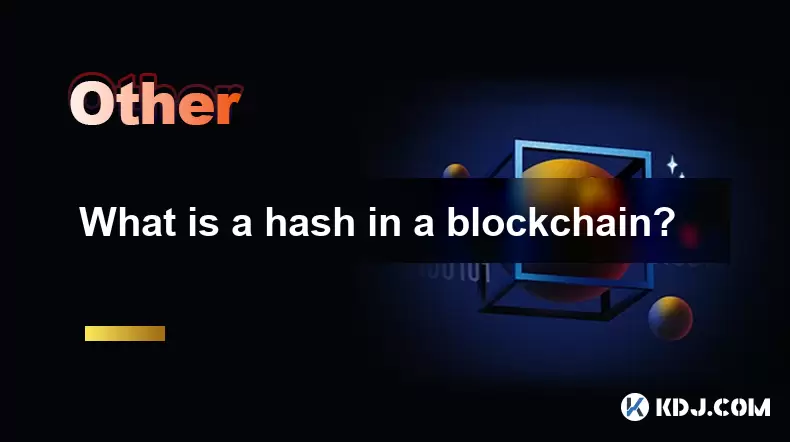
What is a hash in a blockchain?
Aug 02,2025 at 04:43am
Understanding the Concept of Hash in BlockchainA hash in the context of blockchain technology refers to a unique digital fingerprint generated by a cr...
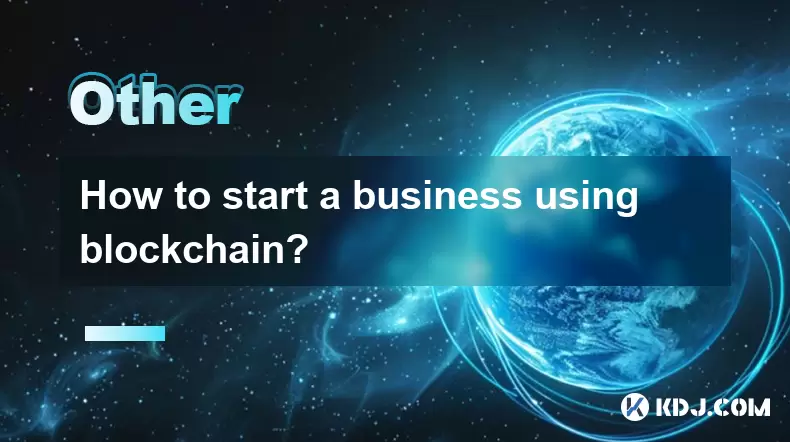
How to start a business using blockchain?
Jul 28,2025 at 12:36am
Understanding the Basics of Blockchain TechnologyBefore diving into the process of starting a business using blockchain, it's crucial to understand wh...
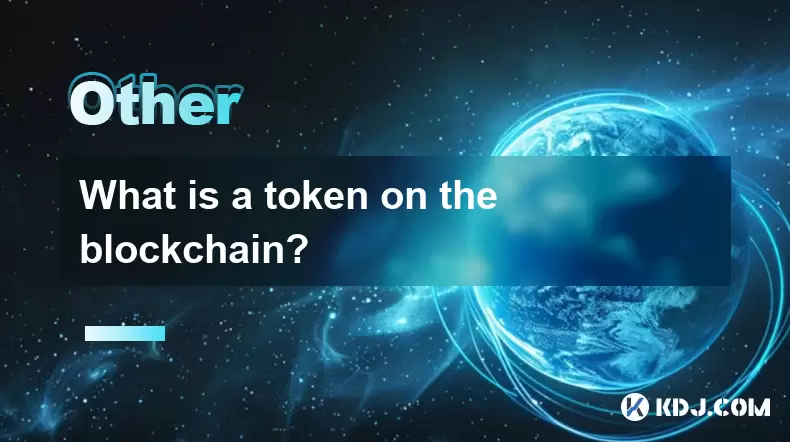
What is a token on the blockchain?
Jul 21,2025 at 07:00am
Understanding the Concept of a TokenIn the realm of blockchain technology, a token is a digital representation of an asset or utility that exists on a...
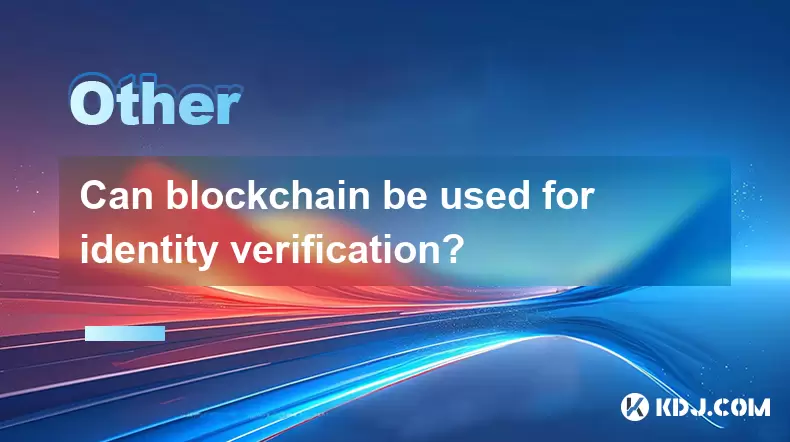
Can blockchain be used for identity verification?
Jul 18,2025 at 02:14pm
Understanding Identity Verification in the Digital AgeIn the modern digital landscape, identity verification has become a critical component for ensur...
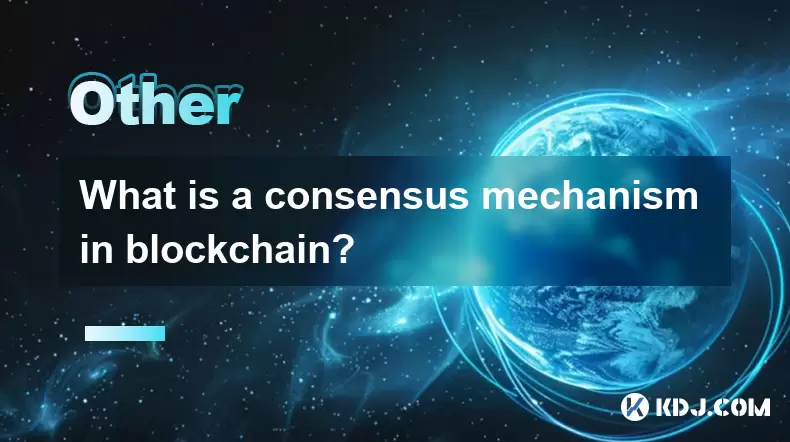
What is a consensus mechanism in blockchain?
Jul 21,2025 at 03:01am
Understanding the Basics of Consensus MechanismsA consensus mechanism is a critical component of any blockchain network. It refers to the process by w...

What is the difference between a blockchain and a database?
Aug 01,2025 at 09:36pm
Understanding the Core Structure of a BlockchainA blockchain is a decentralized digital ledger that records data in a series of immutable blocks linke...

What is a hash in a blockchain?
Aug 02,2025 at 04:43am
Understanding the Concept of Hash in BlockchainA hash in the context of blockchain technology refers to a unique digital fingerprint generated by a cr...

How to start a business using blockchain?
Jul 28,2025 at 12:36am
Understanding the Basics of Blockchain TechnologyBefore diving into the process of starting a business using blockchain, it's crucial to understand wh...

What is a token on the blockchain?
Jul 21,2025 at 07:00am
Understanding the Concept of a TokenIn the realm of blockchain technology, a token is a digital representation of an asset or utility that exists on a...

Can blockchain be used for identity verification?
Jul 18,2025 at 02:14pm
Understanding Identity Verification in the Digital AgeIn the modern digital landscape, identity verification has become a critical component for ensur...

What is a consensus mechanism in blockchain?
Jul 21,2025 at 03:01am
Understanding the Basics of Consensus MechanismsA consensus mechanism is a critical component of any blockchain network. It refers to the process by w...
See all articles

























































































